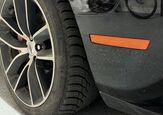#Ferndale
How Detroit Invented Traffic Cops, Traffic Lights, No Parking Zones & Towing Your Car
Due to advancements such as air bags, driving is much safer than it was when I first got my driver’s license in the early 1970s. Even then, because of seat belts and crush zones, cars were much safer than they had been in the early automotive age. The first decades of the automobile resulted in chaotic and unsafe driving conditions. Not only were the vehicles themselves dangerous to passengers and pedestrians (three quarters of early motoring related fatalities were pedestrians, often children), in the early days it was a free for all, with the first proposed traffic laws being instituted only after about a decade after the first automobiles. Author Bill Loomis is working on a book on Detroit history and in an extensive article in the Detroit News he discusses just how unsafe driving was a century ago, as well as the role that the Motor City had in making driving safer and less chaotic. Some of those innovations continue to make drivers safe, while others continue to annoy us.
















Recent Comments